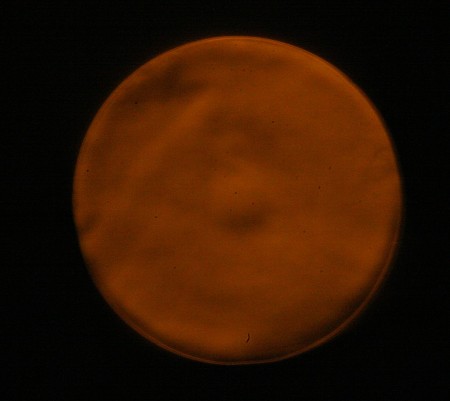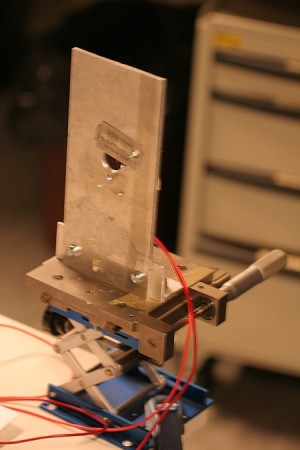Seeing something with the Ronchi test was easy, but the Foucault test proved a bit more demanding. The light-source and the knife-edge need to be securely bolted to the table, and they need to be finely adjustable along the optical axis and perpendicular to the optical axis. The final piece of advice needed to make it work was to sand down the LED used as the light source. The LED then becomes a diffuse suorce, and the knife edge is placed half-way across the LED also.
It turns out that the room we were using for this doesn't have very good 'seeing'. After turning off a printer and some computers that created visible air-current there still remains a lot of disturbances. About the only thing in the photo above that is 'real' and doesn't change with the air-currents is the round spot in the middle.
This is our Foucault tester. The knife edge and light source move along the optical axis using a 50mm-travel translation stage, and everything moves up/down to place the knife edge at the correct height using a small lab jack.

